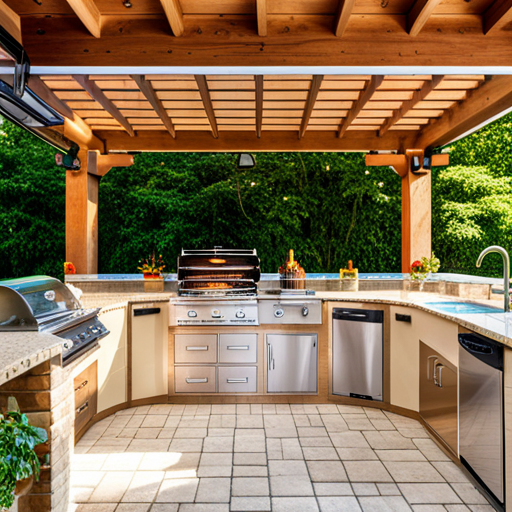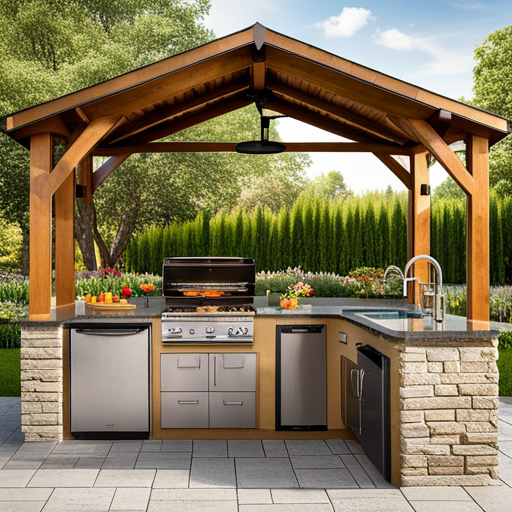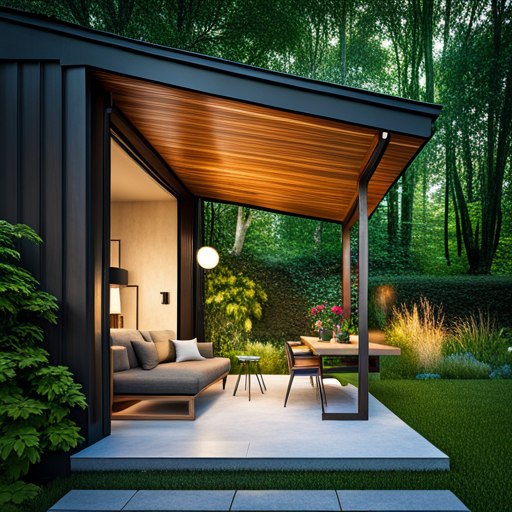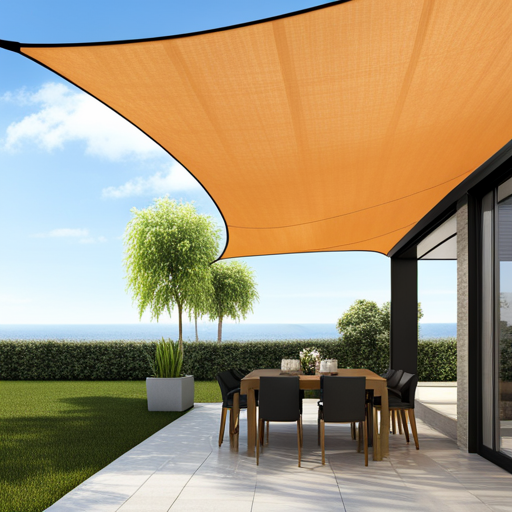Last Updated on June 14, 2024 by John Coleman
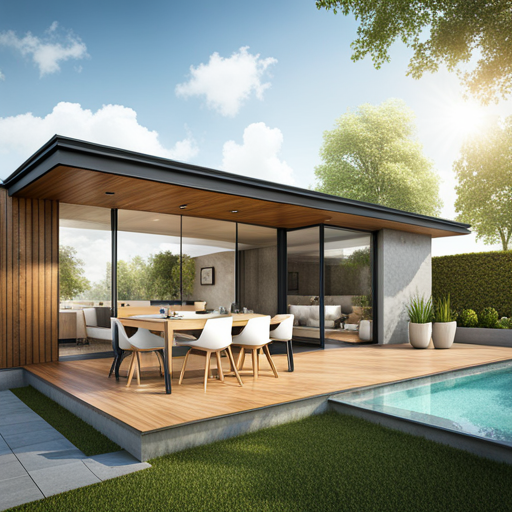
Roof extensions with flat roofs have become increasingly popular in the realm of home improvement. More homeowners are choosing this modern yet timeless architectural option for its charming aesthetics and practical indoor enhancements. If you’re considering extending your roof to create an outdoor living space or add a unique touch to your home, there are essential aspects to understand before starting the project.
This detailed guide not only highlights the advantages of flat roof extensions but also guides you through crucial planning considerations, construction details, maintenance tips, and cost-benefit analysis to support your decision-making. Whether you enjoy DIY projects or prefer professional assistance, this guide ensures a smooth and robust journey into the world of flat roof extensions.
If you purchase through links on this site, we may earn a small commission. See our affiliate disclosure.
What is a Flat Roof Extension?
A flat roof extension is an additional structure built onto the existing roof of a house, creating more usable space and adding value to the property. Unlike traditional sloped roofs, flat roofs have a low or minimal pitch that allows for easier installation and maintenance.
Design Options for Flat Roof Extensions
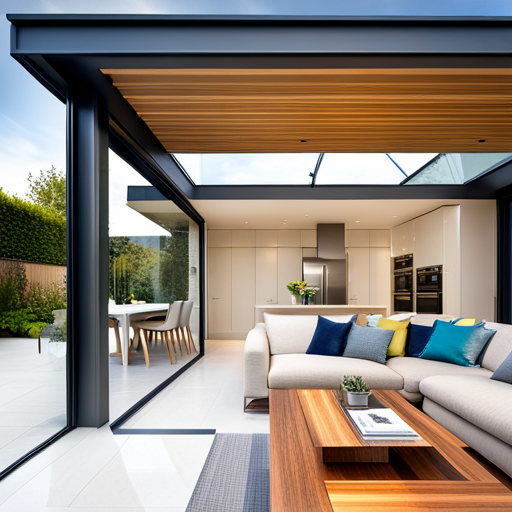
- Roof Terrace Extension: This type of extension adds an outdoor living space on top of an existing flat roof, providing a private and elevated area to relax or entertain.
- Room Addition Extension: This involves building an entirely new room or floor onto the existing roof, expanding the indoor living space of the house.
- Roof Garden Extension: Similar to a terrace extension, this type adds a green garden area on top of the existing flat roof, bringing nature closer to the home.
- Canopy Extension: This type of extension is built as a cover or awning over an existing outdoor area, such as a patio or deck, providing shade and protection from the elements.
Why Flat Roof Extensions Are A Good Idea
When it comes to home redesign, the allure of a flat roof extension is multi-faceted. Here are some advantages you can reap:
Enhanced Aesthetic Appeal
A well-designed flat roof extension has a sleek and modern look that can dramatically enhance the overall visual appeal of your home. It stands out for its simplicity and can be both subtle and striking, making it the perfect marriage of form and function. Owners of vintage and contemporary homes alike find that flat roof extensions remarkably complement their original architecture.
Increased Living Space
Whether you yearn for a tranquil rooftop garden, a home office with a view, or a spacious entertainment area, a flat roof extension delivers valuable additional living space. With an option to include skylights and enjoy a bright, open ambiance, you can make the most of your existing property without encroaching on your outdoor areas.
Cost-Effectiveness
In comparison to pitched roofs, flat roof extensions can often be more cost-effective, largely due to their simpler structure and the reduced amount of materials required. The construction process is typically faster, translating into lower labor costs and minimal disruption to your daily routine during the building phase. Remember that determining the cost-effectiveness should be compared to the complexity of the design you choose. The complexity of the design and materials you choose will impact the actual cost-effectiveness of the project.
Ideal for Solar Panel Placement
With the growing popularity of renewable energy sources, flat roof extensions provide an ideal platform for solar panel placement. The lack of angled roofs allows for a larger surface area to be covered with panels, maximizing their efficiency and energy output. This not only helps in reducing your carbon footprint but can also result in significant savings on your electricity bills.
Disadvantages of a Flat Roof Extension
While flat roof extensions may have many attractive benefits, there are also some drawbacks to consider before committing to this type of home extension project:
Limited Insulation
Flat roofs typically require more insulation than pitched roofs to prevent heat loss and water leakage. This can add up in terms of both time and cost during the construction process.
Drainage Issues
Flat roofs rely on proper drainage to prevent water from accumulating and causing damage. Without regular maintenance and cleaning, clogs can occur in the gutters and downpipes, leading to potential leakage and structural issues.
Limited Design Options
Unlike pitched roofs which offer a variety of design options such as gables and dormers, flat roofs have a more limited range of styles. This may not be a concern for those seeking a modern and minimalist aesthetic, but it may not suit all architectural styles.
Flat Roofs May Increase Homeowner’s Insurance Premiums

It’s important to note that adding a flat roof extension may increase your homeowner’s insurance premiums. This is because flat roofs are more susceptible to damage from extreme weather conditions, such as heavy rains or high winds. Be sure to consult with your insurance provider before embarking on a flat roof project.
Ideal Climate for a Flat Roof Extension
While flat roofs can be a suitable option for certain home extensions, they may not be ideal in all climates. In general, flat roofs are better suited for drier climates where heavy rainfall and snowfall are not common. This is because the lack of slope on a flat roof can make it more prone to water accumulation and potential leakage. If you live in an area with a high amount of precipitation, it may be more beneficial to consider a pitched roof for your home extension.
Planning Considerations
Before you break ground, meticulous planning is non-negotiable. Here’s what you need to focus on:
Permits and Regulations
Familiarize yourself with local building codes and zoning laws. In many jurisdictions, any roof extension, regardless of type, requires permits. Understanding the legalities at the outset of your project will save you time and the possibility of serious setbacks later on.
Structural Integrity Assessment
Engage a structural engineer to ensure your current building can support the weight and design of the proposed extension. This is a crucial step that should not be overlooked, as it determines the safety and success of your project.
Design Considerations
From the integration with your existing home’s architecture to the layout and purpose of the new space, your design choices carry both aesthetic and practical implications. Consider factors such as natural light, ventilation, and how the extension will blend with your outdoor space.
If you purchase through links on this site, we may earn a small commission. See our affiliate disclosure.
Construction Process
The actual construction of your roof extension is where the plans meet practice. This phase involves several steps, each critical to the long-term success of your extension.
Foundation Preparation
Just like any building, a strong foundation is key. Depending on the size and use of your extension, your foundation’s depth and composition will vary. A professional can advise on the best approach to suit your specific needs and site conditions.
Roofing Materials and Techniques
The materials you choose will impact the aesthetics, durability, and function of your roof extension. Popular options include:
EPDM (Ethylene Propylene Diene Monomer) rubber roofing is a synthetic rubber membrane that offers excellent durability and protection against weather elements.
TPO (Thermoplastic Olefin) roofing membrane is a single-ply, reflective material that can help reduce energy costs.
PVC (Polyvinyl Chloride) roofing membrane is another durable, single-ply option that is highly resistant to chemicals and extreme weather.
Built-up Roofing (BUR) is a traditional method that involves layers of asphalt and felt to create a watertight barrier.
Modified Bitumen roofing is a type of BUR that uses polymer-modified asphalt for added strength and flexibility.
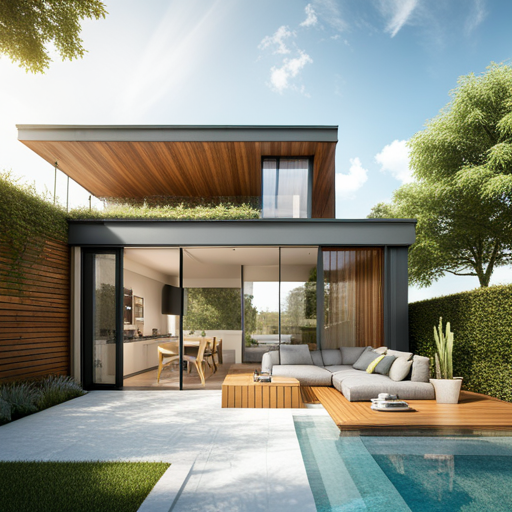
Green roofs (vegetative roofing systems) have become increasingly popular for their environmental benefits, energy efficiency, and aesthetic appeal.
Metal roofing (standing seam or flat panels) offers durability, longevity, and a variety of design options.
Fiberglass roofing is a lightweight, low-maintenance option that can withstand harsh weather conditions.
Liquid-applied roofing membranes (e.g., acrylic or silicone coatings) offer a seamless, waterproof barrier that can extend the life of your roof.
SPF (Spray Polyurethane Foam) roofing is a highly durable, energy-efficient option that can be applied directly to the existing roof surface.
Choosing the right roofing material will depend on factors such as your budget, climate, building structure, and personal preferences. It’s important to consult with a professional before making a final decision to ensure you choose the best option for your specific needs.
In addition to the materials, the installation technique also plays a crucial role in the success of your roof extension. A professional contractor will ensure proper techniques are used for flashing, sealing, and ventilation to prevent leaks and ensure the longevity of your roof.
Waterproofing and Insulation
Proper waterproofing is essential for a flat roof to prevent leaks, which can be more common on flat surfaces than on pitched roofs. Similarly, insulation is critical for maintaining a comfortable temperature and can significantly affect your energy bills.
Maintenance and Longevity
A well-maintained flat roof can last for many years, providing service and style to your home. Understanding how to care for your extension is vital.
Regular Inspections
Schedule yearly inspections to check for any signs of wear, damage, or ponding water. Early detection of issues can prevent more extensive repairs down the line.
Drainage Maintenance
Adequate drainage is pivotal for flat roofs. Keep gutters and scuppers clear of debris to ensure water can flow freely off the roof. Consider installing a green roof system with a layer of vegetation, which can provide natural insulation and better water management.
Lifespan Considerations
The longevity of your flat roof extension is influenced by the materials used, the quality of installation, and the level of care it receives. Be prepared for eventual maintenance and budget for it accordingly, just as you would for any other part of your home.
Cost Analysis
Determining the financial implications of a roof extension is a critical step in the decision-making process. Understanding the upfront costs and potential long-term savings is key to setting your expectations.
How Much Does a Flat Roof Extension Cost?
The cost of a flat roof extension can vary depending on several factors, including the size of the extension, materials used, and labor costs in your area. On average, expect to pay between $5,000 to $20,000 for a basic flat roof installation.
Initial Investment
The initial investment in a flat roof extension involves several components, including design fees, permitting costs, materials, and labor. Depending on the scope of your project, these expenses can vary greatly.
Potential Cost Savings in the Long Run
While the upfront costs of a flat roof extension may seem daunting, there are potential cost savings to consider in the long run. A well-designed and properly installed flat roof can improve energy efficiency, reduce heating and cooling costs, and lower maintenance expenses.
Return on Investment
In addition to potential cost savings, a flat roof extension can also add value to your home. When done correctly, the added living space and improved aesthetics can increase your property’s resale value. It’s essential to consider this potential return on investment when evaluating the cost of a flat roof extension.
What is the Most Cost-Efficient Flat Roof Extension?
When it comes to determining the most cost-efficient flat roof extension, there is no one-size-fits-all answer. The best option for you will depend on your budget, aesthetic preferences, and desired lifespan for your roof.
One of the most cost-effective options for a flat roof extension is EPDM (ethylene propylene diene monomer) rubber roofing. This material is popular for its durability, affordability, and ease of installation. It is a single-ply membrane that can last up to 50 years with proper maintenance. However, it is not the most visually appealing option and may require more frequent repairs over time.
Another cost-efficient choice is PVC (polyvinyl chloride) roofing. It offers similar benefits to EPDM but has a slightly shorter average lifespan of 20-30 years. It also comes in a variety of colors and can be made to mimic other roofing materials like slate or shingles. However, PVC is slightly more expensive than EPDM and may not be suitable for all budgets.
For those with a larger budget, TPO (thermoplastic polyolefin) roofing may be the most cost-efficient option. It offers similar benefits to EPDM and PVC but has a longer lifespan of up to 30 years. It is also highly resistant to punctures, tears, and UV rays. However, TPO is the most expensive option out of the three.
Conclusion
Flat roof extensions present a unique chance to expand your living space and enhance your home’s appearance. Before starting the project, carefully consider factors like drainage, maintenance, and cost. Planning and budgeting are key to a successful, long-lasting flat roof extension that adds value to your home. Consult professionals and gather quotes to make the best choice for your needs and budget. Despite initial costs, a flat roof extension can be a valuable addition to any home. Explore options and decide wisely to enhance your home’s living space and value.
Frequently Asked Questions
Which is cheaper a flat roof or a pitched roof?
Flat roofs are generally cheaper than pitched roofs due to their simpler design and fewer materials needed. However, the cost can vary depending on the type of material used for the flat roof. PVC and TPO may be more expensive options compared to EPDM, but they also have longer lifespans which can save money on future repairs or replacements.
Do flat roofs leak more than other types of roofs?
Flat roofs can be prone to leaks if not properly installed or maintained. However, with the right materials and regular inspections and maintenance, flat roofs can be just as resistant to leaks as other types of roofs. It is important to ensure proper drainage and address any issues promptly to prevent potential leaks.
How long do flat roofs last?
The lifespan of a flat roof can vary depending on the type of material used and proper maintenance. Generally, PVC and TPO flat roofs can last up to 30 years while EPDM roofs have a lifespan of about 20 years. However, with regular inspections and repairs as needed, a well-maintained flat roof can last even longer.
Can I install solar panels on a flat roof?
Yes, solar panels can be installed on a flat roof. In fact, flat roofs are often considered ideal for solar panel installation due to their easy accessibility and ability to position panels at the most optimal angle for maximum sunlight exposure. It is important to consult with a professional and ensure that the structure of the roof can support the weight of the solar panels.
Why do flat roofs not use shingles?
Shingles are not commonly used on flat roofs because they are designed for pitched roofs that allow water to run off. With a flat roof, shingles may cause water to pool and potentially lead to leaks. Additionally, shingles require more complex installation on a flat surface and can be more prone to damage from foot traffic or extreme weather conditions. Flat roofs are better suited for materials such as single-ply membranes or built-up roofing which provide a seamless, waterproof barrier.
Why do you put gravel on a flat roof?
Gravel, or other small rocks, are often used as a protective layer on flat roofs to provide added weight and stability against strong winds. It also helps to reflect sunlight and prevent UV damage to the roofing material. The gravel can also serve as a ballast for rooftop equipment and protect the roof from foot traffic during maintenance or repairs. However, not all flat roofs require gravel and alternative materials, such as reflective coatings, can also be used for protection. It is best to consult with a professional to determine the most suitable option for your flat roof.


